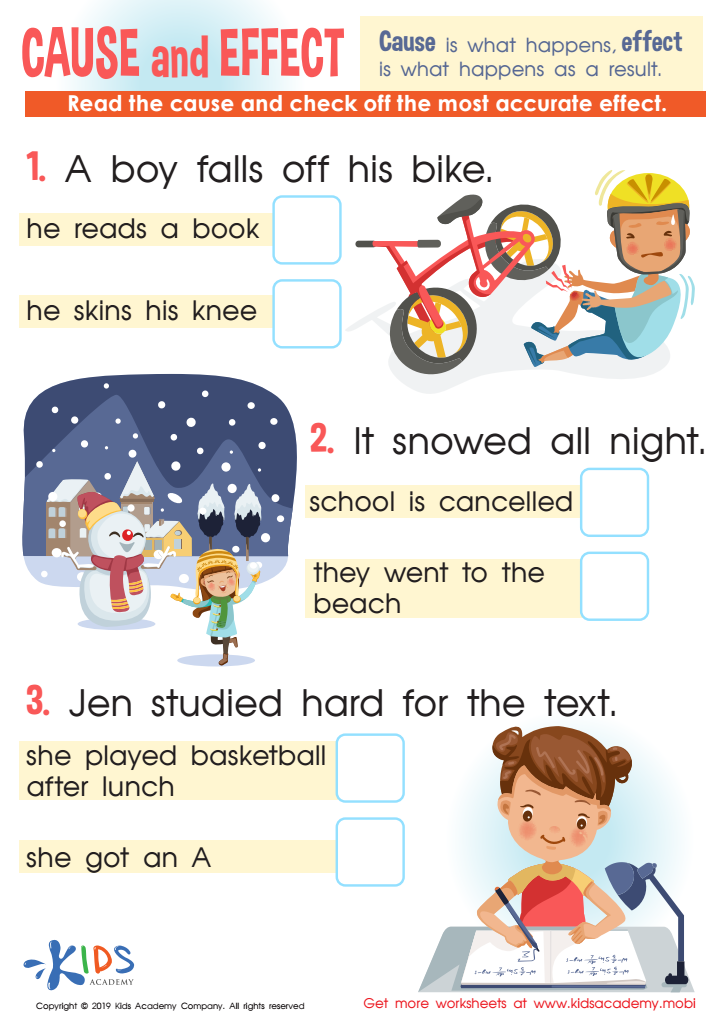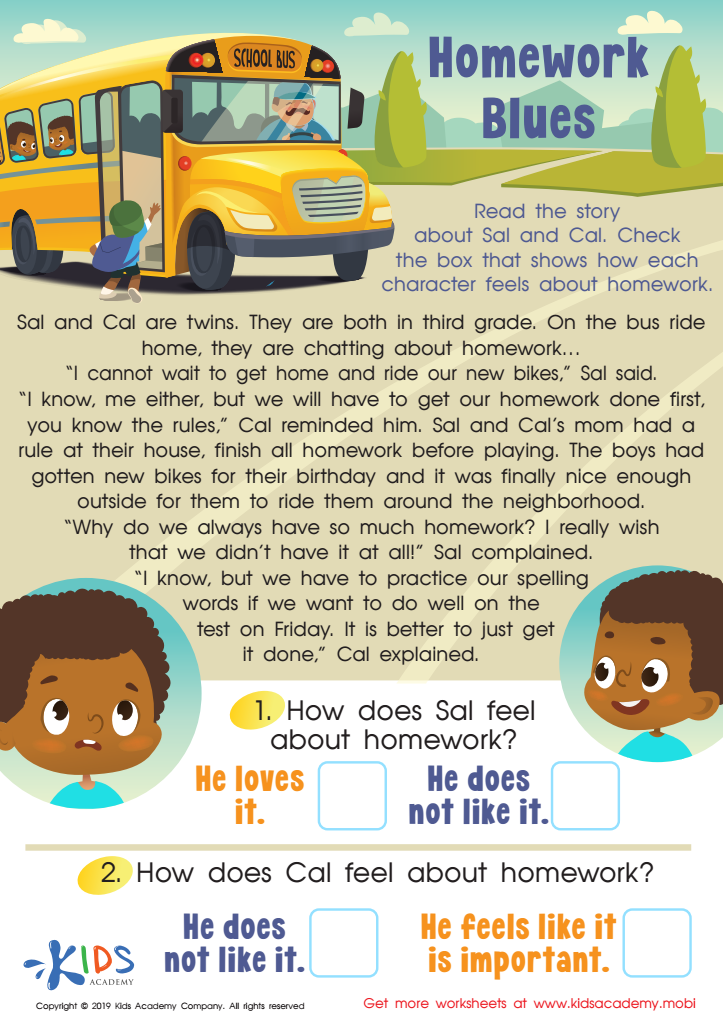Reading Worksheets for Ages 6-8
447 filtered results
-
From - To
Discover engaging reading worksheets designed specifically for children ages 6 to 8! Our collection supports early literacy development through a variety of fun and interactive activities. From phonics and comprehension to vocabulary building, these worksheets help enhance essential reading skills in a playful manner. Perfect for reinforcing learning at home or in the classroom, our resources cater to different learning styles and abilities. With colorful visuals and age-appropriate content, kids will love exploring the world of reading. Download printable versions easily and watch your child’s confidence and enthusiasm for reading grow! Start their literacy journey with us today!


Cities and Towns Worksheet


Comparisons Worksheet


Compare Two Sources Worksheet


Text Features Worksheet


Captions and Images Worksheet


Changes to the Amazon Worksheet


Cause And Effect Worksheet


Sequencential Order Worksheet


Jamestown Worksheet


Goods and Services Worksheet


Branches of the Government Worksheet


King Midas Worksheet


The Boy Who Cried Wolf Part 2 Worksheet


The Boy Who Cried Wolf Part 1 Worksheet


Point of View Worksheet


First and Third Person Point of View Worksheet


Finding Character Traits Worksheet


Trait Maze Worksheet


Story Structure Worksheet


Setting of a Story Worksheet


Homework Blues Worksheet


Point of View Printable


Changing Feelings Worksheet


Character’s Feelings Worksheet
Reading for ages 6-8 is a crucial stage in a child's development, and parents or teachers should be particularly invested in it for several reasons. First, it's during this period that children transition from learning to read to reading to learn. Mastery of reading skills enhances comprehension, vocabulary, and critical thinking, laying a foundation for future academic success.
Moreover, reading fosters imagination and creativity. Engaging with stories encourages children to visualize scenarios, develop empathy, and understand diverse perspectives, essential skills in an increasingly interconnected world. Additionally, reading together strengthens the bond between children and their caregivers, promoting a love of literature and learning.
The ages 6-8 are also formative for motivation and confidence. Early exposure to diverse narratives helps children find joy in reading, making them more inclined to pursue books independently. Furthermore, strong reading skills positively affect various subjects, from math to science, by improving the ability to understand instructions and engage with text-based material.
Ultimately, prioritizing reading during these pivotal years equips children with critical life skills, promotes lifelong learning, and nurtures well-rounded individuals in society. Parents and teachers' active involvement significantly impacts shaping proficient and enthusiastic readers.
 Assign to My Students
Assign to My Students

















